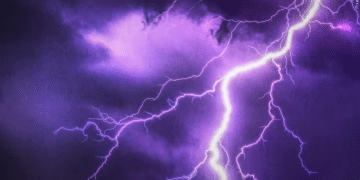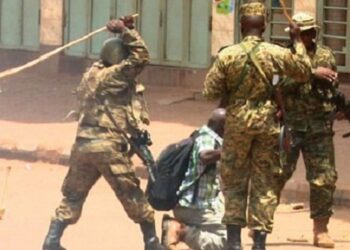By Leonard Kamugisha Akida,
SHEEMA
Two children in Sheema district, members of the same family have died after being struck by suspected lightning on Monday evening.
The incident occurred in Kisizi Central Cell, Shuuku Town Council, Sheema district on Monday evening at around at about 5:45pm.
The deceased have been identified as Tugabiirwe Demus, 14, and Twinomugisha Triva, 12, both residents of Kinogo Cell, Kishabya Ward, and pupils of St. Charles Lwanga Primary School in Shuuku Town Council.
Greater Bushenyi Regional Police spokesperson, SP Tayebwa Apollo, said the victims had reportedly stayed home from school and were returning from grazing goats when the lightning struck.
He said investigations were underway and urged members of the public to remain vigilant during thunderstorms and to work with police in safeguarding lives and property.
Bodies to Kabwoohe Health Centre IV for a post-mortem examination to confirm the exact cause of death.
Lightning can strike 15-20 km (10-15 miles) in any direction away from the dark thunderclouds. This is often called ‘a bolt out of the blue’ because lightning has struck when blue sky is present.
Globally, lightning kills an estimated 24,000 people and injures 240,000 annually. For each fatality, about nine survivors suffer long-term complications. Fatalities are especially high in India (2,000–3,000 annually) and remain elevated in Madagascar, Venezuela, and the DR Congo.
Uganda is among the most lightning, prone countries in the world, with several deaths recorded annually, particularly in rural areas during the rainy season. Between 2007 and 2022, lightning killed at least 191 people and injured 727, many of them schoolchildren. The threat remains severe: since January 2025, lightning has claimed 10 lives and injured over 70 across the country.
Globally, lightning kills an estimated 24,000 people and injures 240,000 annually. For each fatality, about nine survivors suffer long-term complications. Fatalities are especially high in India (2,000–3,000 annually) and remain elevated in Madagascar, Venezuela, and the DR Congo.
In attempts to scale up lightning protection, particularly in schools, the government of Uganda under the ministry of education and sports committed to equip existing and new structures with lightning arrestors.
“The MoES through our construction management unit is committed to ensuring that both new and existing school structures across Uganda are fitted with proper lightning protection system,” First Lady Janet Kataha Museveni said at the International Lightning Safety Day at Palabek SS on June 28
However, lightning experts at the African Centre for Lightning and Electromagnetics Network (ACLENet), argue that Uganda’s ability to reduce lightning deaths remains a hard nut to crack due to high import taxes on essential lightning protection equipments, and weak enforcement of building regulations in the country.
Prof. Mary Ann Cooper, Managing Director ACLENet says these challenges among others hamper access to life-saving materials.
“Another critical challenge is the heavy import taxes of up to 35% on essential lightning protection materials. These taxes significantly limit ACLENet’s ability to scale up its operations and reach more vulnerable communities in need of protection,” she said.
Weak enforcement of building regulations, which require lightning protection in all new school structures. In many cases, installed systems fail to meet international safety standards, leaving students and teachers at risk.
ACLENet urges immediate action, including such as installation of lightning protection systems in all public buildings, particularly schools.
They also called for nationwide lightning safety education to dispel myths and promote safe shelter practices, and expansion of early-warning networks and lightning-detection sensors to alert at-risk communities.








































